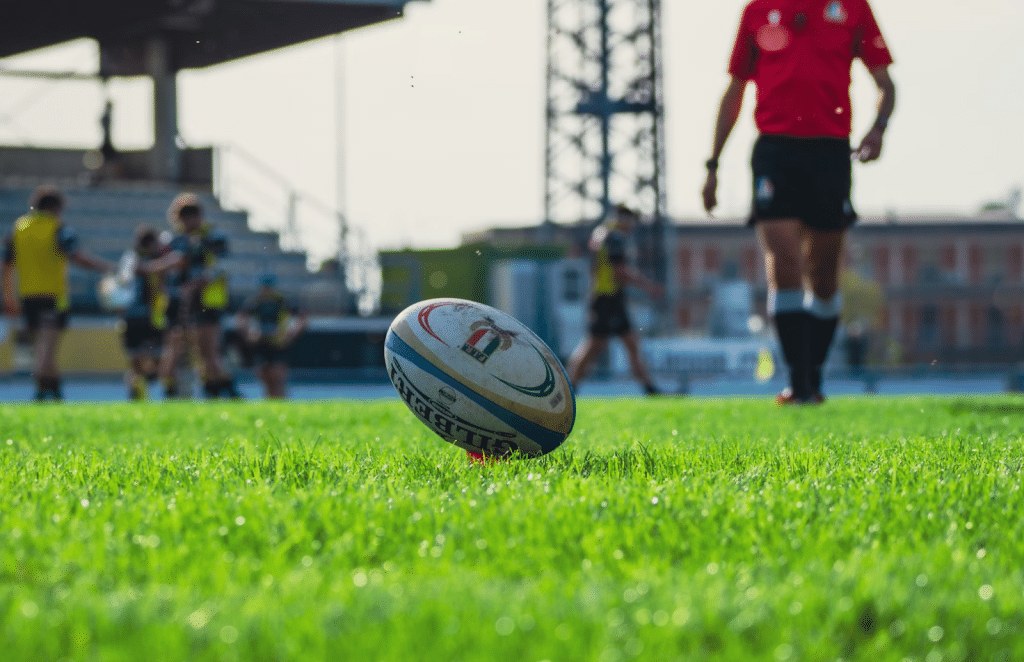
Rugby is speed, momentum, and brute strength. But with every bone-rattling tackle and a pass shaped in geometric precision comes a layer of information begging to be exposed. Nowadays, with the advent of machine learning, coaches and analysts can explore the web of data like never before. Be it player performance and analytics, rehabilitation, and even injury prediction, machine learning is changing the game. How? Let’s take a closer look at how big data begins to intervene in rugby analytics.
In the modern era of sports, technology plays a crucial role not only on the field but also in how fans engage with the game. For rugby enthusiasts, melbet mobile provides a seamless platform to place bets, track real-time statistics, and stay connected to the action. This mobile application brings the world of rugby and betting into your pocket, enhancing the experience by offering updates, insights, and opportunities for fans to engage in the sport like never before.
Machine Learning Explained
Machine learning is a subfield of artificial intelligence in which a system is exposed to data and learns how to perform specific tasks without being explicitly programmed to. As opposed to a set of instructions, which are commonly used by many systems, ML algorithms look at a set of data, forecast outcomes, and progress as the data evolves. The capacity to search and sort through massive amounts of data in the shortest time possible is advantageous in sports such as rugby because a metric bonanza is created after each play.
For instance, ML algorithms can track players’ movements, analyze team tactics, and even forecast game results. Rather, it is how these systems learn from previous trends that would have otherwise gone unnoticed by humans. This technology is being employed by rugby teams in order to enhance player performance, expose weaknesses in the opponent’s strategy, and gain the upper hand in contests.


How Rugby Uses Data
During games and training, rugby teams have a lot of data to sort through, and that is where machine learning comes in. This data is essential for enhancing performance, improving strategies, and preventing injuries.
Key Uses of Data in Rugby:
- Tracking Player Movements: The use of special gadgets monitors the speed of players, the distance covered, and their location on the field.
- Analyzing Tackles: Similar to evaluating hitting effectiveness, tackles employ standards such as impact force and timing.
- Game Predictions: Team activities with ML models assist in determining past encounters and likely outcomes based on history and statistics.
The statistical viewpoint makes it clear why every decision is made and how effective each of them has been, hence giving teams a more sophisticated method of play and victory.
Tracking Player Movements
In rugby, positioning is critical. Machine learning assists coaches in understanding player positioning, velocity, and time taken to respond. Data is collected thanks to the GPS trackers and wearable sensors during training and matches, which is later processed by ML algorithms to recognize patterns.
For example, ML can show if a player on the defending team often engages in out-of-position moves or whether any of the players running around the pitch cover as much area as their fellow teammates. In this way, it enables coaches to look at and work on specific areas of weakness and make the required changes. Besides, these metrics also guide the players in how to streamline their movements, reduce energy expenditures during the game, and uphold efficiency until the conclusion of the game.
Predicting Game Outcomes
One other area that is fascinating is the use of machine learning in predicting game outcomes, especially in rugby. There is ML capable of estimating winning or losing chances through the evaluation of various factors such as the previous records of the teams, the line-up of the participating teams, climatic conditions, and the effectiveness of the players over time.
Algorithms, on the other hand, could point out patterns like the manner in which a team behaves in cases when it plays under particular conditions, for instance, the home conditions or when it plays against specific teams. These records are not only beneficial for the fans, they also enable the coaches to make shrewd decisions as to strategies to adopt, which players to substitute during the match, and the entire training focus.
Stay Updated with Melbet Instagram
As machine learning continues to transform rugby, Instagram MelBet provides fans with a unique opportunity to follow the latest developments in the sport. From match highlights to expert analysis and predictions, Melbet’s Instagram page offers a continuous flow of content tailored for rugby enthusiasts. Whether you’re looking for pre-match predictions, in-game insights, or post-match analysis, Melbet’s Instagram is your go-to source for staying up-to-date with the world of rugby and sports betting.
Evaluating Tackling Efficiency
Tackling is another of the important skills in rugby that combines the physical aspects of the players. New tools in the form of machine learning can help us look at tackling in a different way and improve its efficiency. Let’s look at some of the most popular metrics:
| Metric | What It Measures | Impact on Training |
| Impact Force | Strength of the tackle | Helps improve player conditioning |
| Tackle Success Rate | Percentage of completed tackles | Identifies consistent tacklers |
| Reaction Time | Speed of engagement after a pass | Improves defensive positioning |
| Injury Probability | Likelihood of injury during tackles | Adjusts technique to reduce risks |
It assists players to develop their technique with the added advantage of minimizing chances of injuries, thereby making tackles more efficient and safe.
Improving Player Fitness
Fitness is the broadest word in a rugby player’s dictionary, and machine learning allows the teams to redefine the terms of conditioning forever. Devices that monitor the heart, VO2 max, and recovery periods give a good insight into a player’s readiness. Machine learning algorithms utilize this information to provide tools for the assessment of the level of excessive training marked by fatigue, appropriate rest periods, and individualized fitness plans.
For example, if a certain player gets fatigued after the first half, the system will recommend certain interventions so that the player can be ready for the second match. As a result, the use of data in this manner maximizes the lifetime of a player while ensuring the player is at the very top of their game when out on the field.
Better Team Strategies
Machine learning creates opportunities for teams to come up with better and more flexible game plans that can be reworked depending on the available information.
Strategic Enhancements on the Basis of ML:
- Opponent Analysis: Helps recognize the weaknesses in the formations and strategies of the other team.
- Expectation: Conducts virtual testing of several different strategies in order to identify the most successful ones available.
- Positional Optimization: Recommends performers’ positions in line with past performance records.
Once armed with such insights, teams will modify their plays to outsmart the opponents and win the game.


Real-Time Game Insights
A rugby match always requires decisive action in a short span of time. With the advancements in machine learning, it is possible to process game statistics and provide useful information. This information can be acted on immediately by both coaches and players. For instance, machine learning models can be trained to ascertain fatigue patterns in major players on the field and make substitutions without waiting for their performance to decline.
These recommendations further aid teams in modifying their plans of action for the game as the match progresses. In the event that the opponent is capitalizing on a certain area of weakness, AI-based analysis of the game helps to propose countermeasures for their offensive strategy. This dynamic approach ensures that teams are always a step ahead during the entire spell of the match.
Reducing Injury Risks
As a sport, rugby has a significant incidence of contact injuries. Machine learning is important in minimizing such risks through examination of players’ workload, movement features, and impact forces.
For instance, if a movement analysis algorithm perceives a player as actively participating in heavy collisions, it suggests training methods or technical changes for that player. Likewise, tracking the rest periods and the muscles that are tired assists in avoiding overuse injuries, enabling the athletes to be fit and ready for competition.
The Future of Rugby Analytics
Rugby’s future is undoubtedly brighter with the application of machine learning. The prospects are endless, from wearable technology designed to assist in predicting injuries to AI technologies that are responsible for optimizing team tactics and strategies on a real-time basis. As data collection and analytical tools improve and evolve, the efficiency of the management of rugby teams will be enhanced. Players will improve their performance, and injuries will be reduced. The fusion of technology and tradition is redeveloping rugby for the better. A better and safer game will be brought by never-before-seen technology.


